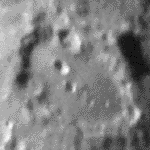When it comes to astronomy, the ultimate must-have accessory is a clear-sky. But even on a cloudless night, an observing session can be wrecked by poor seeing, where an unsteady sky blurs the view. One of the biggest factors in determining how steady sky is an atmospheric phenomenon known as the jet stream.
What is the jet stream?
Jet streams are narrow bands of very strong winds that meander across the globe like rivers, sometimes reaching speeds in excess of 400km/h although they have an average speed of about 180km/h.
Like rivers, the speed at the centre or core is faster than at the edges, where it tails off.
The direction of flow is always from west to east and lies in a region of the atmosphere known as the tropopause. The tropopause is the area between the troposphere and the stratosphere, around 8km to 13km above the Earth’s surface.
Jet streams are formed at the boundary between warm air towards the equator and cold air towards the pole.
Air is constantly being moved around the globe to spread heat energy from the equator towards the poles and is driven by three ‘cells’ of circulation known as the Hadley Cell, the Ferrel Cell and the Polar Cell in order of increasing latitude.
The particular Jet Stream that affects UK latitudes is the Polar Jet.
How does the jet stream affect astronomical observations?
The movement of air currents between the telescope observer and the vacuum of space causes ripples in the atmosphere – rather like the disturbance of air above a heat source – making the air appear to shimmer.
This effect is called ‘seeing’ and on nights of minimal atmospheric disturbance, the seeing is said to be good and the best detail becomes visible especially in Solar System objects but also to a lesser extent in deep sky objects.
The reason that disturbed air causes poor seeing is that the refractive index of the air (how much it bends the light by) changes rapidly, meaning the light from celestial objects is deflected by different amounts, blurring the final image.

These disturbances can be caused by three main sources.
The first is locally by convection currents from the ground and nearby buildings and even the telescope itself.
The second is by turbulence in the troposphere which is the region of the atmosphere that stretches from a few tens of metres to a thousand metres or so above the Earth’s surface.
Turbulence in the troposphere is caused by the effects of the topography upwind of your observing position and includes nearby populated areas, hills and other obstacles that disturb the airflow.
The third is caused by the jet stream. If it happens to be placed where you’re oserving, the atmospheric disturbance so caused will rob your view of fine detail – perhaps even making meaningful observations impossible.
In addition to the direct effects that the jet stream has on the seeing, it also has a major effect on weather systems, controlling the formation of high and low pressure regions which in turn control local weather conditions.
Generally, fair, dry and hotter weather is associated with high pressure whereas rain, clouds and stormy conditions are associated with low pressure.
If it is cloudy, it doesn’t matter how good the potential seeing may be, you’re still not going to observe anything!
Does the jet stream only affect the UK?
No, jet streams are present in both the northern and southern hemispheres and have far reaching effects around the globe, not only for astronomers with regard to seeing but to the weather in general.
How can I manage the effects of seeing from the jet stream?
There is nothing you can do about the jet stream itself but you can take some steps to reduce its worst effects.
Different wavelengths (colours) of light are refracted (bent) by different amounts by air.
If the seeing is bad then the different wavelengths are mixed together and blend together, reducing clarity.
Using a filter to pass just one colour of light can have a positive impact on observing bright objects like the Moon and planets so try observing through various different coloured filters.
As the seeing is constantly changing, patience and perseverance can be true virtues as there will be times when the view is considerably better than at other times during an observing session
You can also check the jet stream forecasts and avoid observing when the jet stream is overhead.
How can I monitor the jet stream?

Monitoring the jet stream in real-time is really a case of setting up and observing the current conditions through a cooled telescope, which will reduce any local effects.
However, there are some excellent online resources that produce good predictions for the position and strength of the jet stream in the coming hours.
Predicting good or bad seeing is not an exact science, rather like predicting the weather generally and it is important to remember that it is not just the jet stream that affects the seeing directly!
One excellent source is Netweather.tv which has both animated and interactive jet stream maps to help with your predictions.
